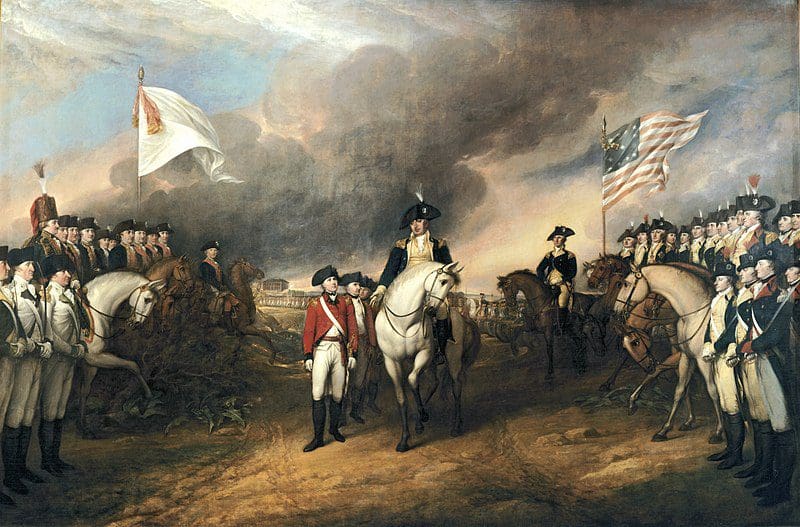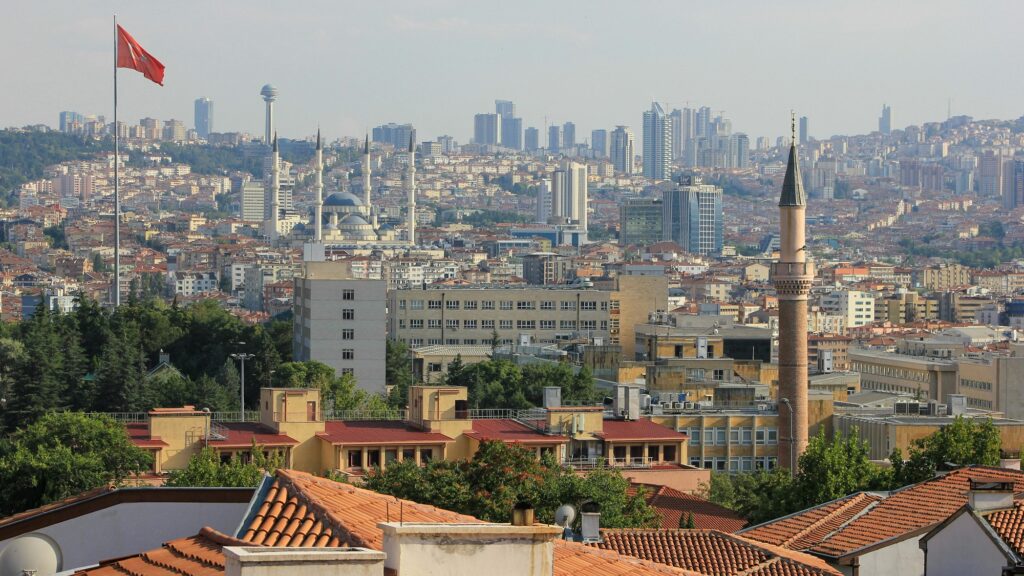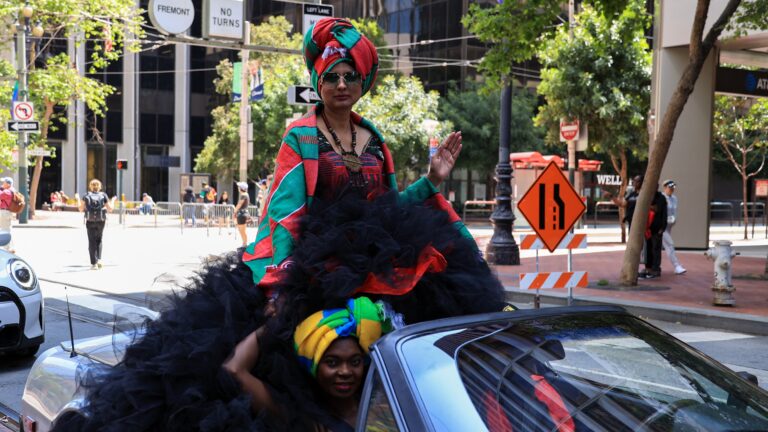Michael Kováts de Fabriczy, the Hungarian Hussar Who Made the Ultimate Sacrifice for American Independence
Michael Kováts de Fabriczy (Fabriczi Kováts Mihály) was born in 1724 in Karcag, in Habsburg-ruled Hungary. He was a nobleman, orphaned at a very young age, who started his military career in the Hungarian cavalry under Maria Theresa. During the AustrianWar of Succession (1740–1748), he fought as a common hussar for the Habsburg dynasty, in the cavalry regiment of free Jazygs and Cumans. In the years following the War of Succession, his awakening love of freedom and his belief in the self-determination of nations caused him to turn against Habsburg rule in Hungary. In the Seven Years’ War (1756–1763), he joined the Prussian Army to fight against the Austrians. He started off as a cornet in Frederick the Great’s army, but was later promoted to the rank of lieutenant and then of captain in the Prussian cavalry. His unit, the Kováts Corps, served in the region between Mainz and Dresden during the Seven Years’ War.1 To honour his bravery and service in war, he was awarded the highest distinction in the Prussian Army, the Pour le Mérite.
After retiring from the Prussian Army, in 1761 he was captured by the Austrians and charged with high treason. After a year in prison, Maria Theresa pardoned him and ordered the return of his confiscated possessions. He married and had a son who died at the age of three. Subsequently he was separated from his wife, as he left Hungary to serve the cause of the Bar Confederation to liberate the Polish-Lithuanian Commonwealth from foreign, mainly Russian domination. Answering the call of Casimir Pulaski, one of the leading military commanders for the Bar Confederation, Kováts trained fifteen thousand Polish men to fight for the freedom and independence of their country against Imperial Russia.2 After the Bar Confederation’s revolutionary struggle was suppressed by the Russians, both Pulaski and Kováts were forced into exile.
Kováts’s commitment to join the struggle for liberty would not let him rest and wait for a reply
The defeat in Poland did not discourage Kováts from fighting for his ideals of freedom and self-determination against oppressive monarchs. After learning about the revolution in America, in an emotional letter addressed to Benjamin Franklin, then American ambassador to Paris, he offered his sword in the fight for the freedom and independence of the thirteen colonies of America. Kováts’s commitment to join the struggle for liberty would not let him rest and wait for a reply— without Franklin’s recommendation letter or response, he swiftly travelled to America at his own expense. He was right not to waste any time waiting—unfortunately, the recipient never read the letter, which was discovered only in 1939. The letter (originally written in Latin) by Kováts to Franklin reads as follows:
‘Most Illustrious Sir:
Golden freedom cannot be purchased with yellow gold.
I, who have the honour to present this letter to your Excellency, am also following the call of the Fathers of the Land, as the pioneers of freedom always did. I am a free man and a Hungarian. As to my military status I was trained in the Royal Prussian Army and raised from the lowest rank to the dignity of a Captain of the Hussars, not so much by luck and the mercy of chance than by most diligent self-discipline and the virtue of my arms. The dangers and the bloodshed of a great many campaigns taught me how to mould a soldier, and, when made, how to arm him and let him defend the dearest of the lands with his best ability under any conditions and developments of the war.
I now am here of my own free will, having taken all the horrible hardships and bothers of this journey, and I am willing to sacrifice myself wholly and faithfully as it is expected of an honest soldier facing the hazards and great dangers of the war, to the detriment of Joseph3 and as well for the freedom of your great Congress. […] I beg your Excellency, to grant me a passport and a letter of recommendation to the most benevolent Congress. […]
At last, awaiting your gracious answer, I have no wish greater than to leave forthwith, to be where I am needed most, to serve and die in everlasting obedience to Your Excellency and the Congress.
Most faithful unto death,
Bordeaux, January 13th, 1777. Michael Kováts de Fabricy
P.S: As yet I am unable to write, fluently in French or English and had only the choice of writing either in German or Latin; for this I apologize to your Excellency.’4
Upon his arrival in America Kováts delivered some military letters both to General Spencer and to General George Washington.5 Even though Kováts had the chance to earn a recommendation letter from Washington, due to language barriers and some mistakes committed by the interpreter, Washington sent Kováts to the Continental Congress without his official endorsement.6 Lacking any recommendation, Kováts’s first attempt to join the Continental Army was turned down by the Congress. He did not give up; he joined a German irregular battalion to fight in the American Revolutionary War.7
Kováts soon discovered that his friend from Europe, Casimir Pulaski was in America too, as he had been invited by General George Washington to join the War of Independence. When Kováts met Casimir Pulaski, Pulaski was brigadier general and commander-in-chief of Washington’s cavalry. In the letters exchanged between Pulaski and George Washington, the Polish general praised the talent and dedication of Kováts and asked Washington to make him training officer of the cavalry forces. Kováts and Pulaski also decided to apply together for a permission from the Congress to create and train a legion for the War of Independence. Approving their request, on 28 March 1778, a unit known as Pulaski’s Legion was commissioned by the Continental Congress. Mihály Kováts became the colonel commandant of the legion a month after its creation.
As colonel commandant, Kováts’s main mission was to train a cavalry in the tradition of Hungarian hussar tactics
As colonel commandant, Kováts’s main mission was to train a cavalry in the tradition of Hungarian hussar tactics. Before Kováts started his work, the American cavalry had received no training, and Kováts’s written guidelines, which form the first manual of American cavalry, proved to be very effective in creating a disciplined and efficient cavalry force. The recruitment and training of the Hussar regiment for the American Army began very soon after the legion was commissioned. By October 1778, the legion consisted of 330 officers and soldiers. Within months, the legion had become the best-trained and most reputable cavalry unit fighting in the Continental Army. By September 1778, the legion was ready to enter battle, and was sent into combat at Osborne Island on 10 October. Four days later the regiment victoriously opposed the British Army at Egg Harbour. The legion spent the winter of 1778 training at Cole’s Fort. Towards the end of the winter, on 2 February 1779, the legion began its march to South Carolina to join the forces of General Benjamin Lincoln. The army marched 1,200 kilometres from New York to South Carolina. Along the way, however, they suffered from an outbreak of smallpox, and half of the men were lost to the disease.

PHOTO: WIKIPEDIA
Decreased in numbers but not in spirit, Kováts arrived in Charleston with 150 soldiers on 8 May 1779. By that time the siege of the city was underway, and the residents urged Pulaski’s Legion to surrender to the British. In fact, the city’s mayor was engaged in the final stage of negotiations with the British Army to surrender and neutralize Charleston. On 11 May, the British general Prévost (who commanded a considerably larger force than Pulaski’s Legion) led an unsuccessful assault on the city of Charleston, but Pulaski’s Legion withstood the attack. Discouraged by the defeat and unsure of the enemies’ numbers, the British general pulled his men back and retreated to Savannah.8 The victory in Charleston allowed the Continental Army to receive lifesaving aid from France through the port of Charleston.
The victory at Charleston was not won without great cost, however. As Mihály Kováts led his cavalry against the British on 11 May 1779, he fell dead off his horse, making the ultimate sacrifice for the great cause of American independence. He was buried on the spot where he fell, and later a statue of him was erected there to commemorate his sacrifice. Honouring his name, Brigade Major Skelly, Kováts’s British opponent, paid him and the Pulaski’s Legion the highest of compliments, describing the unit as ‘the best cavalry the rebels ever had’. A couple of months later his comrade, Pulaski shared his fate, dying during the Siege of Savannah.9
Together with his brother in arms, the Polish General Casimir Pulaski, Mihály Kováts is known as the ‘Founding Father of the US Cavalry’
Together with his brother in arms, the Polish General Casimir Pulaski, Mihály Kováts is known as the ‘Founding Father of the US Cavalry’. His memory is preserved and celebrated by the Citadel Military College in Charleston, where part of the campus is named in his honour. During the Second World War, Liberty Ship SS Michael de Kovats was named after him The Hungarian Embassy in Washington also erected a statue of him, while the American Hungarian Federation remembers his name with their motto ‘Most Faithful unto Death’ (Fidelissimus ad Mortem) which figured in Kováts’s letter to Benjamin Franklin.10 In 1978, when the Holy Crown was returned to Hungary from the United States, Michael Kovats de Fabriczy was mentioned as one of the great heroes of the two peoples. It is not only the individual, Mihály Kováts, the two nations hold equally dear, but also the ideals Kováts died for—the ideals of liberty, independence, and democracy.
NOTES
1 Aladár Urbán, ‘Review of the Life of Colonel Mihály Kováts, Hungarian Hero of the American War of Independence (1724–1779)’, Acta Historica Academiae Scientiarum Hungaricae, 30/3–4 (1984), 417.
2 Zsolt Csutak, ‘Amerikai magyar katonahősök’ (Hungarian War Heroes in America), Publikáció Eszterházy Egyetem (2019), http://publikacio.uni- eszterhazy.hu/5172/1/75_97_Csutak.pdf, accessed 27 April 2022, 76.
3 Joseph II (1741–1790), son of Maria Theresa, who refused to be crowned as king of Hungary.
That is why Kováts calls him so unceremoniously by his first name.
4 ‘Michael Kováts de Fabriczy’, The Magyar Foundation (2016), https://medium.com/@MagyarUSA/michael- kov%C3%A1ts-de-fabriczy-8adc4235c68c, accessed 27 April 2022.
5 Patrik Kunec, ‘The Hungarian Participants in the American War of Independence’, Codrul Cosminului, 26/1, (2010), 52.
6 Elemér Bakó, ‘Colonel Commandant Michael Kovats de Fabricy of the Pulaski Legion: A Founding Father of the United States Cavalry’, American HungarianFederation, www.americanhungarianfederation.org/ news_michael_kovats_de_fabricy.htm, accessed 27 April 2022.
7 Urbán, ‘Review of the Life of Colonel Mihály Kováts’, 417.
8 Sándor György, ‘“Mindhalálig leghívebb”: Kováts Mihály az első jenki huszár’ (‘Most Faithful unto Death’: Mihály Kováts, the First Yankee Hussar),
Napi Történelmi Forrás (2017), https://ntf.hu/index. php/2017/04/01/mindhalalig-leghivebb-kovats-mihaly- az-elso-jenki-huszar/, accessed 27 April 2022.
9 Péter Márton, ‘Links between Migration and the Presence of Foreign Combatants in Armed Conflict’, Cojourn, 1/1 (2016), 43.
10 ‘About our Logo’, American Hungarian Federation, www.americanhungarianfederation.org/about.htm.








